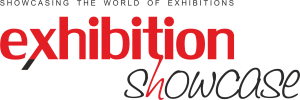The IAVM Foundation was initially conceived when the Cincinnati Task Force in their 1980 report, following “The Who” concert tragedy (1979), made a heartfelt request to the International Association of Venue Managers (IAVM) to develop and implement crowd management safety standards so that venues across the nation could learn from this devastating tragedy.
ES. How does IAVM Foundation contribute to the success and vitality of public assembly venues and their communities worldwide?
Brad Mayne. International Association of Venue Managers is our Association. The Foundation is separate, yet it exists to fund initiatives for the association. Since 1980, the IAVM Foundation has contributed to the success and vitality of public assembly venues and their communities worldwide through the Association. The Foundation has funded initiatives, offered grants, and funds scholarships for IAVM Events, Schools and Academies. The Foundation also helps Brad Mayne. International Association of Venue Managers is our Association. The Foundation is separate, yet it exists to fund initiatives for the association. Since 1980, the IAVM Foundation has contributed to the success and vitality of public assembly venues and their communities worldwide through the Association. The Foundation has funded initiatives, offered grants, and funds scholarships for IAVM Events, Schools and Academies. The Foundation also helps fund our advocacy efforts for the industry. Three initiatives that stand out include the creation of the Venue Management School, assisted in funding the Exhibitions and Meetings Safety and Security Initiative (EMSSI) for the meetings and exhibitions industry, and our current Diversity & Inclusive Leadership strategic plan and implementation to ensure the venue industry creates equity for all members of our association.
ES. What are some of the major initiatives the association is working on now?
Brad Mayne. Due to the pandemic, the association has transitioned into collaborating with other associations in the industry to manage the pandemic’s impact on our industry. We focused on assisting the industry to prepare, respond, recover, and be resilient. IAVM volunteer members and an industry wide COVID-19 task force generated ways to stabilize the industry, work for funding from government sources, as well as protection and managing liability. We collectively coordinated our COVID protocols with show organizers, exhibition companies, contractors, travel, insurance, infectious disease entities and destinations. In addition, IAVM adopted COVID sanitization protocols with International Sanitary Supply Association (ISSA) and the Global Biorisk Advisory Council (GBAC) accreditation program, not only with the venues but with the whole industry.
Our venues re-purposed to fight COVID by becoming hospitals, vaccinations sites, homeless shelters, voting venues, logistics hubs, food banks and served other purposes to serve local communities. As there has been heightened security issues in places where people gather, we have been able to offer live training once again for safety and security. Our current trainings include, but are not limited to, Situational Awareness, De-Escalation Practices, Active Shooter Training, and Trained Crowd Manager certification. We have concentrated our energy on young professionals, women in the industry, and diversity and equity for the association, focusing on everyone having access to all aspects of the venue professional industry. The pandemic showed us that online learning is a reasonable way to educate our members, so we are working to create online programming to serve more of the industry with education and training programs.

ES. Please tell us a bit about your role at IAVM? Please highlight your career journey, major hurdles overcome, and milestones achieved so far.
Brad Mayne. As President and CEO of IAVM, I report to the Board of Directors to carry out their vision and goals for our 7,000 members. I have a great staff that serves our members with cutting edge innovation, advanced education, research, and stellar networking opportunities. We have a robust volunteer program where nearly 300 volunteers serve in leadership, multiple committees, and task forces which gives our members the opportunity to lead and learn to further their careers in the industry.
I have worked in the events industry since 1969 at the age of 14 as a part time employee, then transitioned to a full-time employee in 1981. I advanced in the organizations I worked for and have been involved in managing convention centers, arenas, stadiums and performing arts theaters. I became a regional manager for Ogden Entertainment with responsibilities for administration of several client venues. I have been involved in the financing, design, construction and opening of three venues. The past twenty-three years of my venue career I held the position of CEO for American Airlines Center in Dallas Texas and MetLife Stadium in East Rutherford New Jersey.
I have hosted several major sporting events including the NCAA Final Four, NBA Championships, NHL Stanley Cup Championships, National Figure Skating Championships, and the XLVIII Super Bowl. As a volunteer member of IAVM since 1987, I’ve achieved my Certified Venue Executive (CVE) in 1992, received the highest award for IAVM named the Charles A. McElravy Award, as well as the Foundation Legacy Award. I chaired the Board of Regents, Arenas Committee, and served on the Certification and Foundation boards. Since becoming CEO of IAVM, we have grown membership by 30%, generated 33% higher revenues, and have stabilized the association during the pandemic when we lost 66% of our revenues.
ES. How was the idea of IAVM Foundation conceived and how did it come into action? Please share the details.
Brad Mayne. The Foundation was initially conceived when the Cincinnati Task Force in their 1980 report, following “The Who” concert tragedy (1979), made a heartfelt request to the International Association of Venue Managers (IAVM) to develop and implement crowd management safety standards so that venues across the nation could learn from this devastating tragedy. As a result, the IAVM Foundation was propelled from the drawing board to a focused existence in 1982, and since then, has provided over $3.2 million in funding for professional development and education, research, and best practices development to ensure the safety and advancement of the public assembly venue industry.
ES. What are the challenges being faced by the event/venue Industry today and how can these be eliminated?
Brad Mayne. The events industry plays a major factor in the diverse communities we serve. We have flourished in the past but over the past 17 months have learned that we are stronger together. We seem to work in silos as we work together, and it has worked but it can certainly be better. The Events Industry Council is a great resource that brings most of the entities in the industry together to further collaboration with one another. IAVM is proud to be a part of the council and the great work they are accomplishing. The collaboration that has taken place during the pandemic was eye opening that when we gather, research, and understand one another, we find solutions to the many challenges we all face. We found we can work closer together in benefiting all that we are a part of.
ES. How can we ensure the perpetual success and growth of the public assembly industry? What are some future initiatives being planned through IAVM Foundation?
Brad Mayne. The best way to ensure perpetual success is through knowledge, education and networking with everyone pitching in to further the work of the whole industry. Afterall, we are all servant leaders working to make the world a stronger and more resilient industry.
ES. ‘Knowledge, technology, and service are the key differentiating factors to create a competitive advantage and ultimately determine success.’ Please comment.
Brad Mayne. I absolutely agree with the statement. Up until several years ago, the events industry was using technology from other industries to assist us. Today there is a plethora of organizations that are creating technologies to serve our industry. It is important that we embrace the support of technology to become stronger, more efficient, and more communicative in sharing best practices that serve our stake holders.

ES. What are some of the programmes run by your foundation? How do you relate MegaShelters Resource and Life Safety Council with the current scenario? Are you looking forward to creating any such kind of initiatives post the pandemic Covid-19?
Brad Mayne. The Mega Shelter Resource Guide was implemented during the pandemic when our venues were re-purposed. We are now adding new sections to the guide by placing new protocols into the guide with what we learned. The Mega Shelter program assists government agencies, when there are disasters that bring forward the need to assist those who have been negatively affected by natural disasters and was put to good use during the pandemic. We created a COVID 19 task force to generate new protocols. The task force is made up of other associations in the event industry, along with epidemiologists and government entities which makes it a strong program to be updated as we face new challenges. With upheaval in the world growing, the Life Safety Council program is a great resource to further our safety and security measures.
ES. We would like to know, what keeps you busy when you are away from work?
Brad Mayne. As a long time, venue manager, I have faced some pretty big challenges and learned from each challenge. The events industry is a great school in training how to handle major occurrences. Multi-tasking becomes a part of our DNA and if we hire quality and trustworthy staff to assist, they can make or break the ability to be agile and efficient at doing everything well. When I am not working, I am spending time with my wife and our nine grandchildren. I attend and am active in my church and in service to our community. I also love to fish, and my brother and our families take frequent trips to Alaska together for a week of salmon and halibut fishing.
















